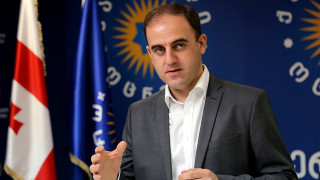During his speech at the session of the Tbilisi City Council, the Mayor of Tbilisi, Davit Narmania, accused the United National Movement of using flawed practice and stated that the fee for increasing the K2 construction intensity coefficient was established in 2007 during the office of the United National Movement. According to Mr Narmania’s information, about 2,000 permits for increasing the K2 construction intensity coefficient were issued from 2009 to August 2014. "We have prohibited the increase of the K2 coefficient in order to spare the city from the chaotic construction and ugly buildings you (United National Movement) allowed. In 2007, it was you who established this flawed practice of increasing the construction intensity coefficient and it was also you who established fees for issuing special (zonal) agreements whose results cause suffering for our citizens today," said the Mayor of Tbilisi.
FactCheck verified the accuracy of Davit Narmania’s statement.
The K2 construction intensity coefficient is the ratio of the overall area of the floors of a building on a given plot of land to the overall area of the plot. Increasing the construction intensity coefficient by paying a certain fee means that the construction company can add to the number of floors of a building.
Changing the marginal indicators of the main parameters of construction is regulated by the Law of Georgia on Spatial Arrangement and the Basics of City Building. Increasing the construction intensity coefficient by paying a certain fee was occurring as a result of a special (zonal) agreement with the Tbilisi Municipality. This fee was established in 2007. On 13 April 2007, a change was made to Article 5 of the Law of Georgia on Local Fees with the fees for issuing special (zonal) agreements added.
According to the 24 May 2016 Directive of Tbilisi City Council, the increase of the K2 construction intensity coefficient in central parts of the city was temporarily suspended.
As for the statistics of issuing permits for the increase of the K2 coefficient, according to the information of the Tbilisi Municipality Architecture Service, a total of 1,948 permits for increasing the K2 construction intensity coefficient have been issued from 2009 to August 2014 whilst this number is 1,037 in the period of August 2014 to today. As the data make clear, an annual average of 336 permits were being issued for the increase of the K2 coefficient during the office of the United National Movement (from 2009 to August 2014 as indicated in the statement) whilst the annual average went up to 518 after the changes in the Tbilisi Municipality government (from August 2014 to today). Hence, the context of Davit Narmania’s statement, in which he speaks only about the increase in the number of permits issued by the previous city government, is not appropriate.
It should also be pointed out that in January 2016, City Institute Georgia, which is working on Tbilisi’s new General Development Plan, proposed a package of changes to Tbilisi City Hall as concerns the rules for construction regulation (see FactCheck’s article on this issue). According to this package, the construction density in Tbilisi (which is the K2 coefficient) would be restricted. Despite the fact that at the Cabinet session on 17 February 2016 Mr Narmania stated that the package of changes would be presented to Tbilisi City Council in the nearest future, this only happened after four months, on 24 May 2016.
Conclusion
The fee for the increase of the K2 construction intensity coefficient was indeed established during the office of the United National Movement in April 2007. The previous government of Tbilisi issued less permits for the increase of the K2 coefficient (336 a year on average) than the current one (517 a year on average).
It should also be noted that it took the incumbent government of Tbilisi two years to eradicate the "faulty practice" (as stated by Mr Narmania) of issuing permits for the increase of the K2 construction intensity coefficient. In addition, the increase of the K2 has only been suspended in central and historic parts of the city. We can safely say that both the previous as well as the incumbent governments of Tbilisi have made their contribution to the "chaotic" construction taking place in the city.
Hence, considering the context, Davit Narmania’s statement, "We prohibited the increase of the K2 coefficient in order to avoid chaotic construction in the city which was allowed in the past by the United National Movement," is MOSTLY FALSE.
Tags:








